Ars Poetica
By Dana Levin
Six monarch butterfly cocoons
clinging to the back of your throat --
you could feel their gold wings trembling.
You were alarmed. You felt infested.
In the downstairs bathroom of the family home,
gagging to spit them out --
and a voice saying, Don't, don't --
--------
From Poet's Choice by Robert Pinsky in The Washington Post Book World. "Figures of speech can illuminate or emphasize," he reminds us, citing Keats' "beaded bubbles winking at the brim" and Shakespeare's "with old woes new wail my dear time's waste." But such imagery is rarely transparent, he adds, and can be disturbing, as in Dickinson's "I heard a Fly buzz -- when I died." "You will never see all the way through such language. When Eliot's Prufrock speaks of the evening 'spread out against the sky/ Like a patient etherised upon a table,' part of the power is the communication of a feeling we can name as numb and vulnerable. But just as important is what cannot be named, the inexhaustible nuances." He cites the poem above as an example of an image"satisfyingly clear in one way and excitingly inexplicable in another way...the irrational part of the image, the nightmare quality, makes these lines memorable. The cocoons have a dream-reality, and within that reality is the further dream or imagining of the gold wings trembling. As in a good suspense movie, the ordinary setting magnifies the fear: 'the downstairs bathroom of the family home.' The Latin root of 'infested' is 'unsafe,' and the voice saying the last two words values the unexpected, the new, over safety. Caution, instinct and good sense want to spit out the infestation of new life, but some other creative spirit, perverse or not, wants to see the unsafe cocoons open. The cocoons, that enfolded and alarming new life, are at once perfectly clear in meaning and perfectly enigmatic.
We drove over the Chesapeake Bay Bridge to Cambridge, home of the Richardson Maritime Museum and home port of the skipjack Nathan of Dorchester, which was out in the Choptank River instead of docked when we arrived. The Kalmar Nyckel, which we had seen previously at the Alexandria Waterfront Festival, was also cruising as we drove into town and we saw her for the first time under sail. Because the museum did not open until 1 p.m. and we had arrived before 12:30, we went to the Portside Seafood Restaurant and had crab soup and crab cakes before visiting the little museum, named for a Dorchester County master boatbuilder. It's obvious that during an earlier era Cambridge was a thriving town, with big Victorian houses, two 17th-century churches and a courthouse, but now it's more working class with the nods to interested tourists. In the museum were models of locally-built ships, equipment and tools from historic ships and lots of information on Richardson, who counted among his ships the replica Maryland Dove which we saw at historic St. Mary's City earlier this summer, and many of the bugeyes and skipjacks he worked on (the Nathan of Dorchester is the last skipjack built on the Chesapeake Bay). The Pride of Baltimore II, which we have seen often in Baltimore Harbor, was built locally as well.
After a visit to the beautiful Kalmar Nyckel, which has gorgeous carvings on its stern and over its gunports, we drove into Delaware to Bethany Beach, where we met my parents at the rental office for Sea Colony and checked in to the condo where we're staying for the week. It's about a mile from the beach in the wooded, lakeside area of Sea Colony, right up from the tennis courts which makes my father very happy. We unpacked, had dinner at the Cottage Cafe down Route 1 and then went to the beach in the early evening, where we saw mole crabs and the black-headed gulls that I've only seen near this part of the Atlantic Ocean. There were horseshoe crab and fiddler crab shells washed up by the tide line but we did not see any live crabs, and did not stay on the beach after dark to see the ghost crabs because we wanted to stop and get ice cream and necessities at the store. So we came back and the kids and grandpa played poker while the rest of us read and fiddled with these photos:
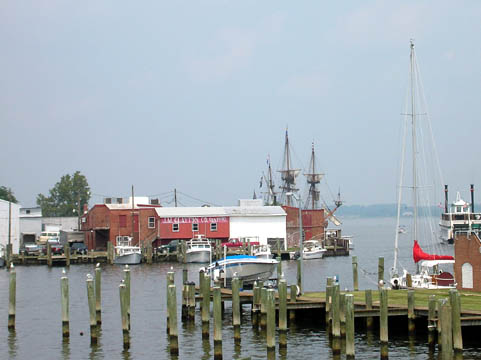
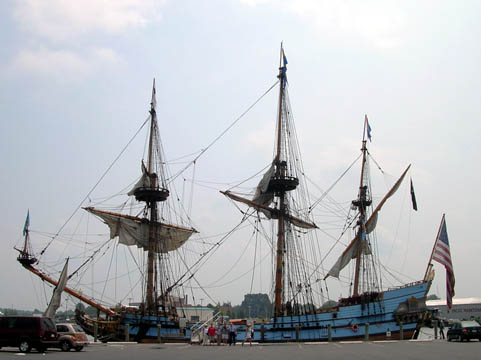
Broadside view of the Kalmar Nyckel, which for some reason was flying the Jolly Roger above the American flag.
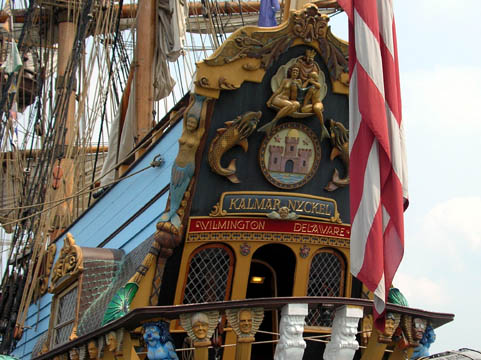
The detail on this ship's stern carvings is gorgeous.
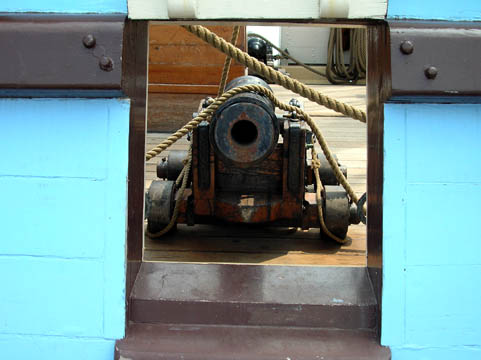
Here you can see two of her guns through one gunport.
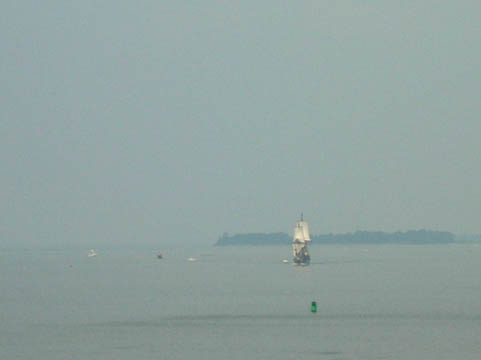
Here, seen from the distance approaching the bridge to Cambridge, is the Kalmar Nyckel under sail.
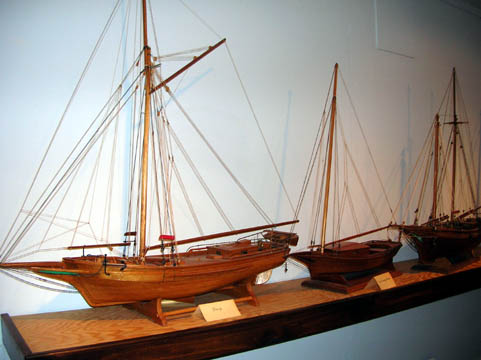
Models of skipjacks, bugeyes, pungys, buyboats, clippers and historical ships built by the late John T. Adams line the walls of the vault at the Richardson Maritime Museum, which now occupies a building that was once a bank.
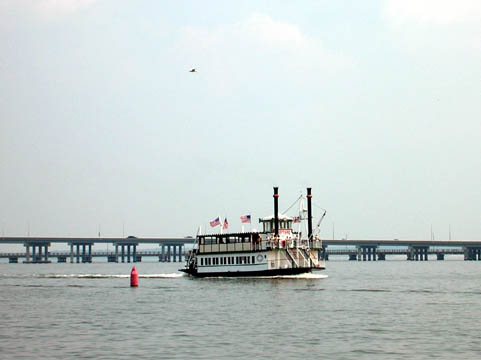
A steamboat travels past the Choptank River bridge just beyond Cambridge.

No comments:
Post a Comment